Okra cultivation is very common and popular all over the world. Okra cultivation is a very lucrative and easy money-making business. Okra (Abelmoschus esculentus), also called Bhendi, is a popular vegetable worldwide. High demand for nutrients, either from soil organic matter or fertilizers.
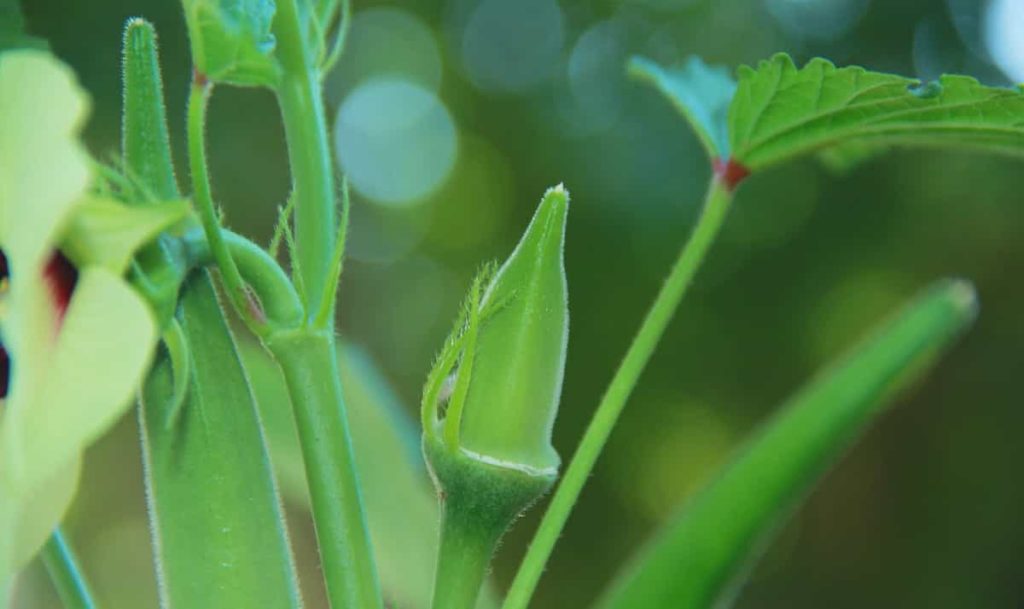
A long pod set requires a constant supply of nitrogen. Side dress at least once after the pods begin to form. Okra is a fast-growing, erect herbaceous annual and belongs to the Malvaceae family. It is an important vegetable crop grown in the tropics and subtropics of the world. Let’s check out the fertilizer management for Okra below.
Fertilizer management for Okra
Organic fertilizers
The use of poultry manure, cow dung, and compost has increased the organic matter in the soil and improved both the physical and chemical properties of the soil compared to inorganic fertilizer and control alone. Poultry manure has been identified as an organic fertilizer better than cow dung and manure for the production of Okra. Therefore, fertilizers are added to the soil to provide the essential elements for plant growth.
Organic fertilizers are usually obtained from animal or plant sources. They are the best sources of organic matter, but you can use organic fertilizers such as compost tea during the relatively short period of growing nutrients. You can also side-dress with compost every 3-4 weeks. Apply 10-10-10 fertilizer or household fertilizer to a depth of 4 inches into the ground with a shovel, about 3 ounces for every 100 square feet of land. The fertilizer label indicates the percentage of the three main nutrients: nitrogen, phosphorus, and potassium.
In case you missed it: Guide to Growing Okra/Bhendi in Texas: For Beginners, Soil Preparation to Harvest
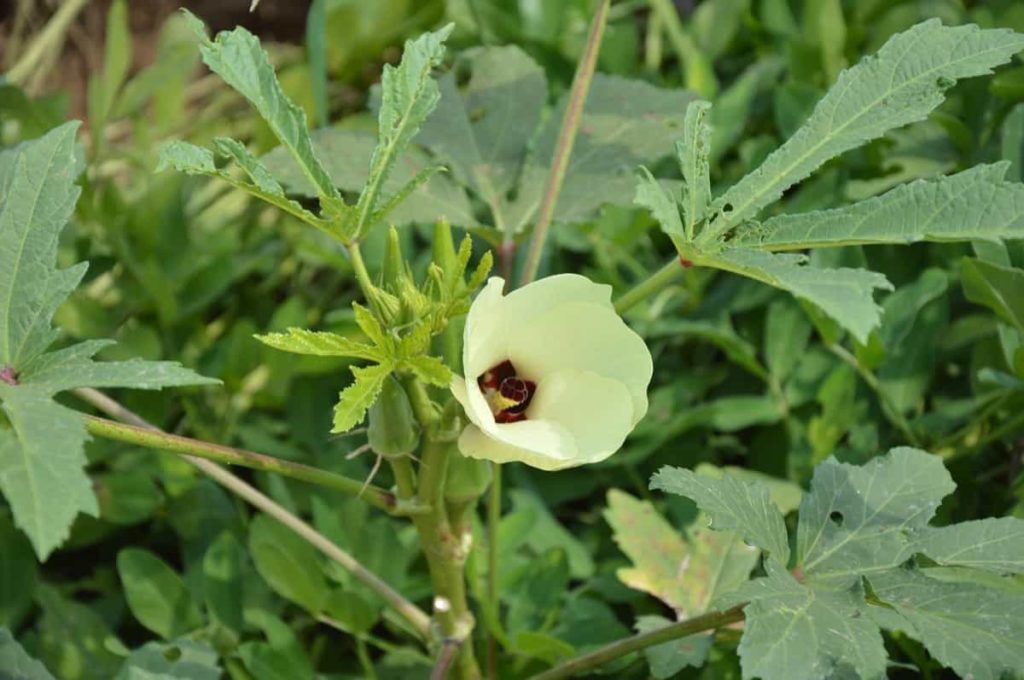
NPK fertilizers
The three nutrient numbers on the fertilizer package are called NPK Value. The letter N is given by nitrogen, P by phosphorus, and K by potassium, essential nutrients for plants. Okra is a popular vegetable grown for its pods and leaves. It has been found that the continuous application of nitrogen fertilizers increases soil acidity and reduces the nutrient and yield of Okra.
Fertilizer application depends on soil fertility and the amount of organic fertilizer applied to the crop. About 20-25 tons of FYM per hectare is added during land preparation. Generally, it is recommended to use 100 kg N, 60 kg P2O5, and 50 kg K2O for maximum yield. Half the N and the full dose of P2O5 and K2O are applied at the cultivation time. Half if given 30 days after sowing and after that perform earthing up operation.
Excessive nitrogen can prevent flowering, while phosphorus fertilizers can promote flowering. Okra is beneficial in adding nitrogen and phosphorus. Farmers usually apply ammonium phosphate fertilizer, which contains both nutrients at 100 pounds per acre before sowing. Chemical fertilizer can be replaced with chicken manure one week before planting. An additional 40-60 lb nitrogen side dressing can be applied six weeks after planting.
A deep narrow furrow is opened on one side of each sowing edge and fertilized. Nitrogen fertilizers like urea, calcium ammonium nitrate (CAN), and ammonium sulfate should be used for the Okra crop. The recommended doses for hybrid varieties are 150 kg N, 112 kg P2O5, and 75 kg K2O. 30% N and 50% P&K are used as basal doses of this diet. The remaining 50% P and 40% N, and 25% K are applied as the first top dressing four weeks after sowing.
A balance of 30% N and 25% K is applied as a second top dressing about seven weeks after sowing. Further use of calcium nitrate may be required later, depending on rainfall and how long Okra production is expected. It is important to provide extra nitrogen at the end of the season when the flowers are concentrated on the top of the plant.
In case you missed it: Red Okra vs Green Okra: Which Makes You Rich?
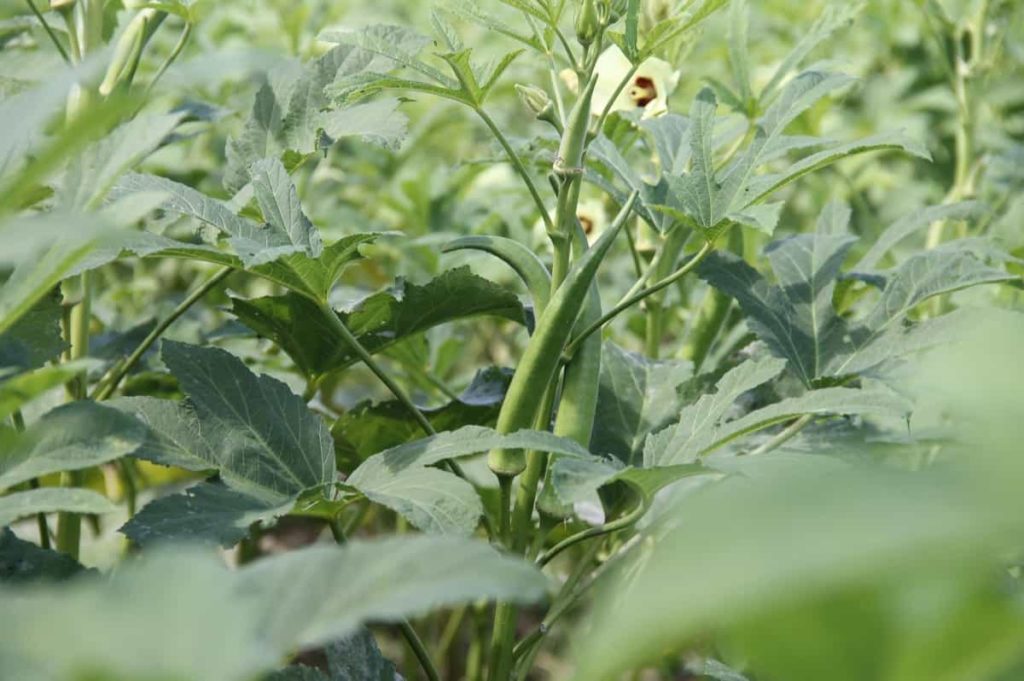
Importance of nitrogen for Okra plant
Nitrogen is an important macronutrient for plant function. It is an important component of amino acids, which form the building blocks of plant proteins and enzymes. Proteins make up the structural material of all living things, and enzymes facilitate a wide range of biochemical reactions within plants. Also, nitrogen is a component of the chlorophyll molecule, enabling plants to receive sunlight energy through light synthesis, promoting plant growth and pod production.
Nitrogen plays an important role inside the plant in ensuring that energy is available when and where the plant needs the energy to improve yields. This important nutrient is also present in the roots as proteins and enzymes help regulate water and nutrient intake. Two top nitrogen dressings – 20 pounds per acre for each top-dress – should provide enough nitrogen for the crop three weeks after the first plant emergence, then three weeks later.
Another way to manage nitrogen is to inject it through a drip irrigation system used to irrigate the crop. The advantage of applying nitrogen through a drip system is that a small amount of nitrogen can be applied more regularly, thus reducing the risk of over-application of nitrogen and reducing nitrogen loss by leaching from heavy rains.
Also, less nitrogen will be available for weed competitors, as nitrogen is applied at the bottom of the row and is not spread over a wide area. Even if fertilizer is applied through the drip irrigation system, it is wise to plant nitrogen, phosphorus, and potassium in advance based on soil test recommendations.
Soil nutrients for Okra plant growth
Okra grows well in soils that are rich in nutrients. You can improve your soil by adding fertilizers. Okra grows in the best soil, which is also loose and well-drained. Although sandy, light soils are ideal for oats, they should be modified with organic matter to enhance nutrition and water retention. Okra grows best in loam-based compost. The soil should be able to dry out slightly and not be constantly wet. You do not want the pot to overflow, or you will have a problem with root rot.
In case you missed it: Okra Pests, Diseases, Symptoms, And Control Measures
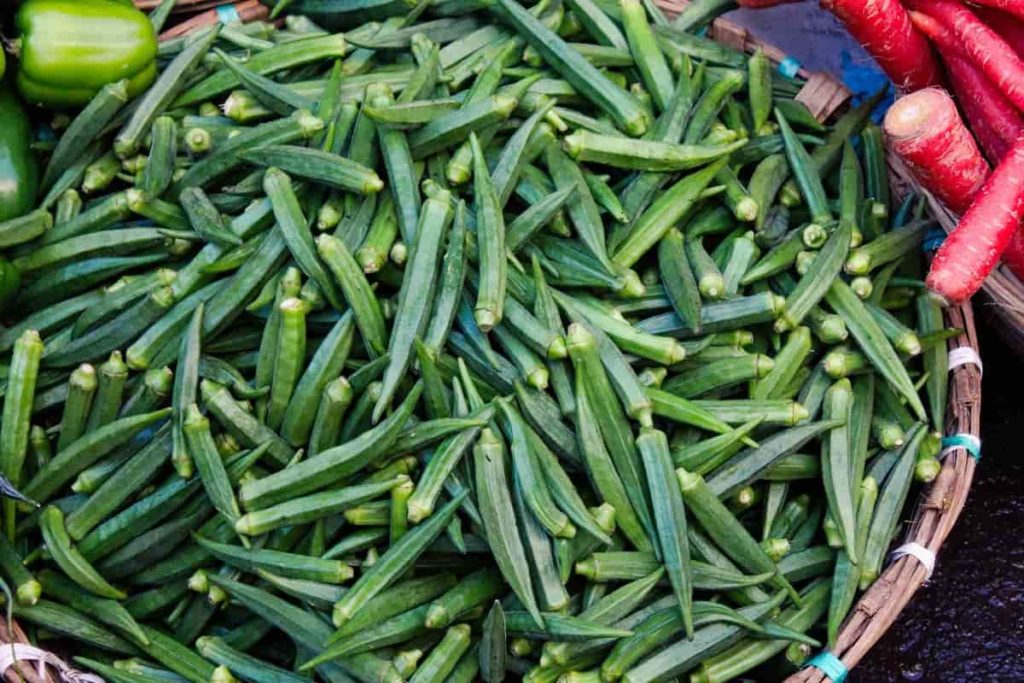
Okra plants do not like to get wet. Make a fertile bed with free drainage soil with lots of organic matter, including compost. Add organic fertilizer with nitrogen to help the plant continue to produce pods. Adding nitrogen to the soil from mid to late season can be helpful. Okra uses a lot of energy to make pods, and the extra nitrogen can increase their yield. Choose a complete fertilizer, organic if possible. It grows well in many soil types.
It helps to start with standard soils; however, the weight of Okra pods, the nutrients in the pods, the amount of ash, the length of the root, and the grains used to improve soil fertility, wood ash, and cocoa. Straw was the most effective, while rice bran and sawdust were the least effective. For maximum growth, spray organic fertilizer 4-6 weeks after planting.
The use of organic fertilizers will help increase pod production. Heavy rains can wash away past use of fertilizers, depleting nutrients for plants in the soil. When growing Okra in containers, make sure that the nutrients are released faster. Therefore, you may need to re-apply fertilizer more often.
Fertilizer application method
Too much nitrogen in the soil will cause excessive plant growth and delay flowering and fruit set, so do not use too much nitrogen. Okra will respond to nitrogen fertilizer, so top dressing with nitrogen fertilizer is recommended. Fertilizer as a side dressing when the Okra plants are 6 to 8 inches tall and replant with fertilizer after two to three weeks. Side dressing is a way to provide the required fertilizer during very strong growth.
Though, dig a shallow trench six inches from the plant base and apply granular compost at the bottom of the trench, following the package instructions for the appropriate amount. Cover the manure with soil. Water the trench well so that the manure melts and soaks into the root zone.
Okra can grow in poor soils but push out more flowers and pods with higher nutrient levels. Many agricultural extensions recommend 10-10-10 fertilizers, but any regular fertilizer with equal numbers (or the first number slightly higher) will suffice.
You can apply the same balanced fertilizer throughout the growing season, but always follow the instructions on the package. Applying more fertilizer will harm the production of Okra more than under fertilization. Although high phosphorus fertilizers are ideal for flower and fruit growth, Okra pods appear on new growing shoots, and nitrogen promotes more shoot growth, so more balanced fertilizers are often recommended.
In case you missed it: Organic Okra Farming (Bhindi/Lady Finger), Cultivation
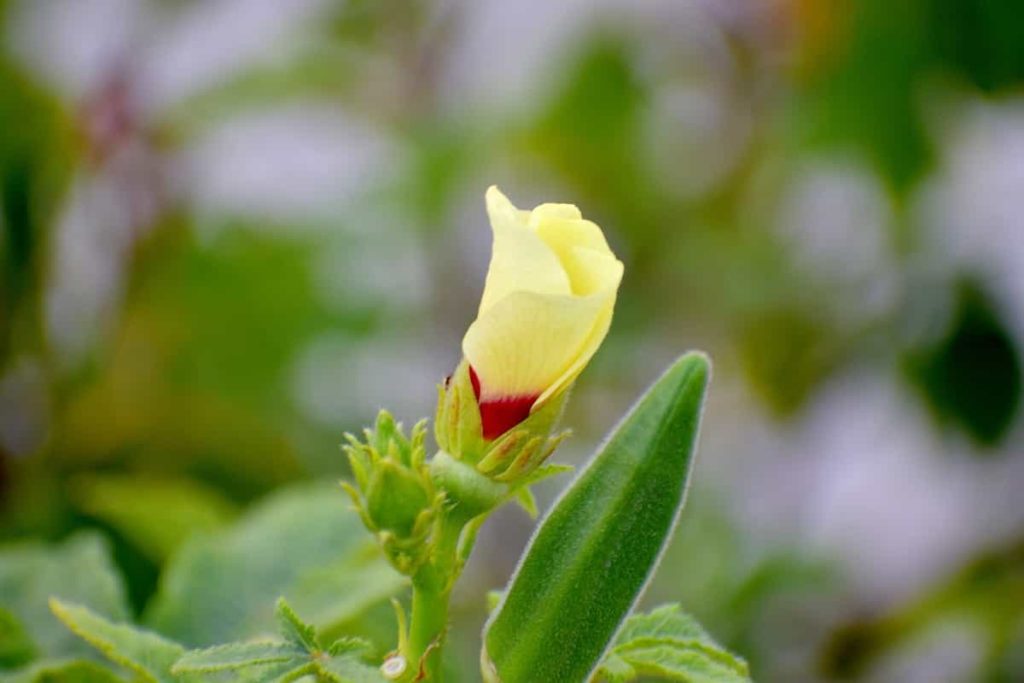
Nutrient deficiencies and their control
Nitrogen deficiency
Symptoms – Plants are stunned. The leaves are smaller than usual. The leaves are yellow. The shoots are thin. The pods are hard.
Control – Use the maximum amount of nitrogen fertilizer. A soil test can determine fertilizer dosage. In the absence of soil testing. 40 – 150 kg N / hectare can be applied. Spray three or four foliar sprays with 1% urea solution at 10-day intervals. Six foliar sprays with 2% urea solution at seven days starting from 20 days after sowing.
Phosphorus deficiency
Symptoms – The leaves are dark green. Plants are stunned.
Control – Maximum use of phosphorus fertilizer. A soil test can determine dosage. In the absence of soil testing. 8-75 kg P2O5 /hectare can be applied.
Potassium deficiency
Symptoms – The number of leaves is low. The margins of the leaves are brownish yellow, brown or scorched. Burning of scorched leaves. Decreases plant growth. The old leaves turn yellow and marginal chlorosis is present.
Control – Maximum use of potassium fertilizer. The soil test can determine dosage. 20 to 75 kg of potash per hectare can be used without soil testing. Foliar spray of KCl by 1%
Boron deficiency
Symptoms – Okra leaves become distorted and brittle. They are small in size and have irregular pod growth. Pods are like small stumps. They do not last long but stay connected for a long time. The leaves begin to fall off. Plant growth stops. Distortion of new leaves (in severe cases, the growing point dies) and the appearance of a wide yellow border on the margins of old leaves. Stagnant growth and thick yellow long lines formed in the skin markings.
Control – Foliar spray of 0.2% borax at clear intervals. Applying 10 kg borax per hectare on previously deficient land will prevent boron deficiency.
Iron deficiency
Symptoms – Decreased plant growth; Chlorosis occurs in young leaves.
Control – Foliar spray of FeSO4 by 0.5%
In case you missed it: Okra Farming Cost, Profits (Bhindi) – A Project Report
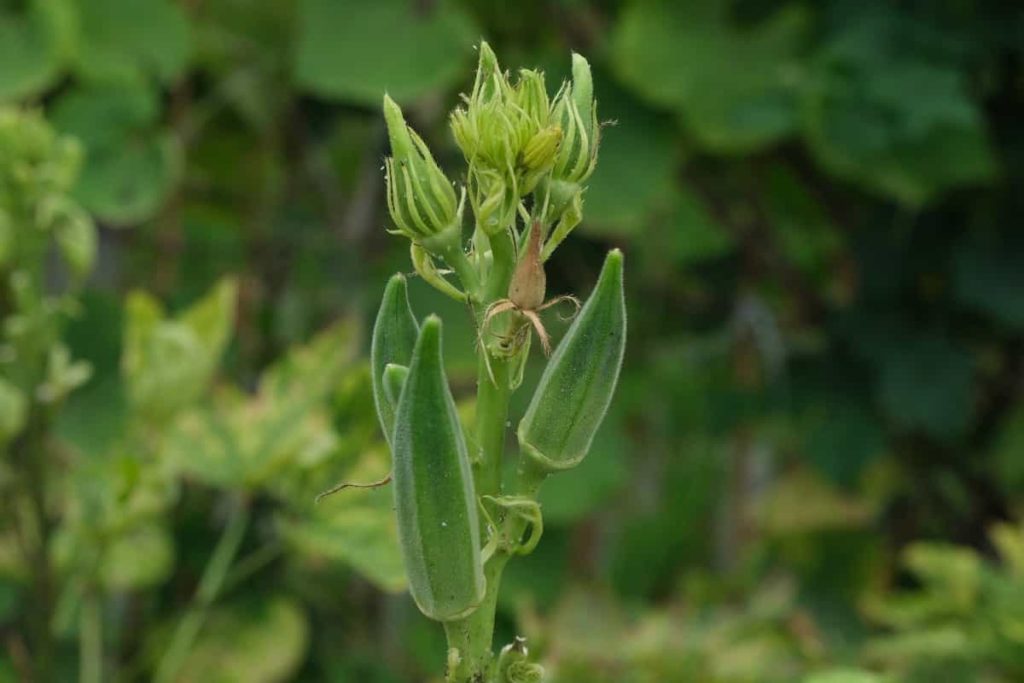
Manganese deficiency
Symptoms – Manganese deficient plants have medium to upper leaf veins that appear green against a faint light green to the yellow blade.
Correction – Spray the foliage with MnSO4 by 0.1% (100 g / 100 L water) on plants.
Zinc deficiency
Symptoms – Marked depression in leaf production and leaf size occurs within three weeks, and leaf mottling develops after two weeks. The diameter of the stem was reduced.
Correction – Foliar spray of ZnSO4 0.5% or soil application of 10kg ZnSO4 / hectare.
Frequently asked questions about Okra fertilizer (FAQ)
Is Urea fertilizer Good for Okra?
The use of urea fertilizer and goat manure has led to increased growth and production of Okra due to the increasing availability of organic matter and nutrients in the soil.
How to increase the production of Okra?
The use of organic fertilizers will help increase pod production. Composting around the plant in the middle of the season will help it to keep growing.
Are coffee grounds good for Okra plants?
Coffee grounds are a suitable organic amendment for growing Okra when used directly on soil or in composted material. Coffee ground helps improve soil texture or tilth and increases soil nutrient density when used with other organic modifications.
Is Epsom salt god for Okra plants?
Some people add Epsom salt to Okra, but it is not recommended globally. Epsom salts are made up of sulfur and magnesium, two ingredients from which Okra can benefit. However, when applying Epsom salt to Okra, care should be taken as it can easily kill Okra plants if used excessively. Use common fertilizer instead of Epsom salt for Okra.
- Types of Pesticides Used in Agriculture: A Beginner’s Guide
- Economical Aquaculture: A Guide to Low-Budget Fish Farming
- 15 Common Planting Errors That Can Doom Your Fruit Trees
- How to Make Houseplants Bushy: Effective Tips and Ideas
- Innovative Strategies for Boosting Coconut Pollination and Yield
- Pollination Strategies for Maximum Pumpkin Yield
- The Complete Guide to Chicken Fattening: Strategies for Maximum Growth
- Natural Solutions for Tulip Problems: 100% Effective Remedies for Leaf and Bulb-Related Issues
- Revolutionizing Citrus Preservation: Towards a Healthier, Greener Future
- Natural Solutions for Peony Leaf and Flower Problems: 100% Effective Remedies
- Maximizing Profits with Avocado Contract Farming in India: A Comprehensive Guide
- Natural Solutions for Hydrangea Problems: 100% Effective Remedies for Leaf and Flowers
- The Ultimate Guide to Choosing the Perfect Foliage Friend: Bringing Life Indoors
- From Sunlight to Sustainability: 15 Ways to Use Solar Technology in Agriculture
- The Ultimate Guide to Dong Tao Chicken: Exploring from History to Raising
- The Eco-Friendly Makeover: How to Convert Your Unused Swimming Pool into a Fish Pond
- Mastering the Art of Delaware Chicken Farming: Essentials for Healthy Backyard Flocks
- 20 Best Homemade Fertilizers for Money Plant: DIY Recipes and Application Methods
- How to Craft a Comprehensive Free-Range Chicken Farming Business Plan
- Brighten Your Flock: Raising Easter Egger Chickens for Beauty and Bounty
- How to Optimize Your Poultry Egg Farm Business Plan with These Strategies
- Subsidy for Spirulina Cultivation: How Indian Government Schemes Encouraging Spirulina Farmers
- Ultimate Guide to Raising Dominique Chickens: Breeding, Feeding, Egg-Production, and Care
- Mastering the Art of Raising Jersey Giant Chickens: Care, Feeding, and More
- Ultimate Guide to Raising Legbar Chickens: Breeding, Farming Practices, Diet, Egg-Production
- How to Raise Welsummer Chickens: A Comprehensive Guide for Beginners
- How to Protect Indoor Plants in Winter: A Comprehensive Guide
- Ultimate Guide to Grow Bag Gardening: Tips, Tricks, and Planting Ideas for Urban Gardeners
- Guide to Lotus Cultivation: How to Propagate, Plant, Grow, Care, Cost, and Profit
- Agriculture Drone Subsidy Scheme: Government Kisan Subsidy, License, and How to Apply Online
- Ultimate Guide to Raising Araucana Chickens: Breed Profile, Farming Economics, Diet, and Care
- Bringing Hydroponics to Classroom: Importance, Benefits of Learning for School Students
- Ultimate Guide to Raising Polish Chickens: Breed Profile, Farming Economics, Diet, and Care
- Ultimate Guide to Raising Australorp Chickens: Profile, Farming Economics, Egg Production, Diet, and Care
- Silkie Chicken Farming: Raising Practices, Varieties, Egg Production, Diet, and Care
- Sussex Chicken Farming: Raising Practices, Varieties, Egg Production, Diet and Care
After one month planted okro, which fertilizer should I applied with side dressing and flowering stage, which liquid fertilizer is required.
Thanks.
I am from California-USA.
I am growing okra in my garden every year. I face problems with leaves. They become curly & brown spots are found on leaves, how to fix this issue?
Or can you suggest routine care so that I get good result?